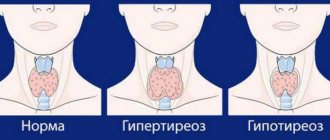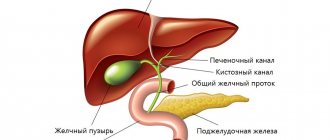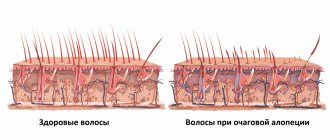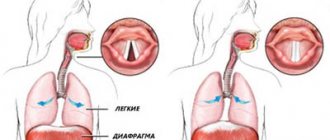Glossalgia is a secondary manifestation of a number of diseases and manifests itself in the form of painful sensations in the tongue area. The patient may experience burning, pinching, tingling and other unpleasant symptoms. Symptoms are not related to external stimuli or food intake. Upon examination, the mucous membrane of the tongue is not changed, has a physiological color, and is free of damage. The pain can be quite intense and usually occurs for no apparent reason. Taking painkillers provides only a short-term effect. To radically solve the problem, it is necessary to identify and eliminate the main cause causing these clinical manifestations.
According to ICD-10, glossalgia is one of the manifestations of glossodynia, which is a pathology of a neurological nature.
Causes of the disease
There are many types of pain in the tongue area. Most of them are inflammatory or traumatic in nature. Glossalgia is a functional disorder. This means that there is no damage of any kind in this case, and the painful sensations are reflexive in nature.
Glossalgia often manifests itself in combination with other disorders of the autonomic nervous system. Without proper treatment, the pain becomes chronic.
Many diseases can serve as a trigger for the development of glossalgia:
- endocrine disorders;
- mental disorders;
- CNS pathology;
- diseases of the digestive system;
- damage to peripheral nerves;
- encephalitis;
- stroke;
- neurosyphilis.
Symptoms usually appear in the presence of triggers, such as stress.
The tongue has pain receptors. When various injuries occur, they are irritated, an electrical impulse is formed, which is transmitted along nerve fibers to the corresponding parts of the brain. This process creates pain. In the case of glossalgia, there is no effect on pain receptors. False sensations arise due to incorrect perception of signals by the nervous system. Pain is usually a warning signal about problems in a particular organ, but in this situation the brain receives a false signal.
Prevention
Preventive measures for diseases of the oral cavity and, in particular, the tongue are:
- giving up tobacco, hookah, electronic cigarettes and alcohol;
- daily high-quality hygiene and the use of mouth rinses that do not contain alcohol and toothpastes - without sodium lauryl sulfate;
- visit the dentist at least once a year;
- avoiding microtrauma of the tongue, for example, when using low-quality artificial onlays on teeth (veneers), when shelling seeds, eating food with sharp edges - candies, crackers, chips, nuts, apples with a hard crust;
- following a gentle healthy hypoallergenic diet.
Clinical manifestations of glossalgia
The leading symptom is pain, burning of the tongue. Usually these sensations occur in its lateral parts and at the tip. Clinical manifestations may occur periodically or haunt the patient almost constantly. They are not associated with any damage and occur spontaneously.
Many patients note that the clinical picture of the disease manifests itself under stress, at the time of nervous overstrain, and with severe anxiety. When eating, discomfort usually decreases or disappears altogether.
The disease is recurrent. The pain may disappear for a long time and then suddenly appear again.
Many patients complain of dryness of the oral mucosa. During the conversation, they feel quickly tired; with severe symptoms, speech may be difficult.
A characteristic symptom is a decrease in pain sensitivity in the affected areas of the tongue. A functional disorder leads to the fact that in the absence of a stimulus, the central nervous system receives a false signal about the influence of a damaging factor, but in the real presence of one, the impulses are blocked. This can lead to secondary trauma to the tongue.
The psychological portrait of a patient with glossalgia is quite typical. These are people who are excitable, react inadequately to the surrounding reality, show excessive concern about their condition, and show groundless aggression. When talking about their problem, they may describe their condition biasedly and talk about symptoms that are actually absent. During the conversation, it is possible to find out that such patients suffer from sleep disorders, nightmares, depression or other mental disorders.
Many patients with glossalgia sincerely believe that they suffer from a serious, incurable disease, such as cancer. When diagnosed with glossalgia, they question the doctor’s competence, refuse treatment and go to see another specialist, leaving a negative review about the previous one.
Treatment of glossodynia
Treatment goes through several stages. First of all, when risk factors are identified, their elimination begins:
- A complete sanitation of the oral cavity is carried out;
- High-quality fillings are placed;
- Rational prosthetics or re-prosthetics are carried out;
- Correction of the bite (its height in particular);
- Treatment of oral pathologies.
At the same time, treatment of the psycho-emotional environment is carried out. This therapy includes sedative and sedative medications. They are selected depending on the initial condition, but preference is still given to lighter medicines on a natural herbal or homeopathic basis. But if serious psycho-emotional problems are identified, they may prescribe the use of tranquilizers, sedatives, antidepressants and strong antipsychotics, which are prescribed by prescription.
This type of treatment cannot be abandoned, otherwise analgesics will only mask the problem for a while. For severe pain, agents with a local anesthetic effect can be used, which usually include lidocaine, benzocaine or novocaine. But long-term use can reduce the effectiveness of the drug, and therefore, first of all, deal with the elimination of the root causes.
The next stages of full recovery are:
- Identification of pathologies of internal organ systems - heart, blood vessels, gastrointestinal tract, endocrine system with the appointment of adequate therapy;
- Physiotherapeutic treatment;
- Spa treatment.
Treatment for glossodynia also takes some time. Therefore, you need to be patient. If there are external factors that provoke this disease, then you should begin to eliminate them. The patient should avoid stress and, if possible, get rid of bad habits. You should also not refuse psychotherapy, since it will help you find the true roots of the problem.
The patient is monitored by neurologists and a dentist, as well as those specialists whose pathologies have been identified. In general, glossodynia can occur for many years without treatment, without causing complications. Accordingly, this pathology only causes discomfort, but does not directly pose a threat to life and health.
Sources used:
- Notes of a good dentist / E.G. Aghajanyan. - M.: Omega, 2011.
- James, William D.; Berger, Timothy G.; et al. Andrews' Diseases of the Skin: Clinical Dermatology. — Saunders Elsevier, 2006.
- Treatment of diseases of gums and teeth using traditional and non-traditional methods / E.L. Isaeva. - M.
- National Library of Medicine (USA)
Diagnostics
The disease must be differentiated from traumatic and inflammatory lesions of the mucous membrane, neuralgia, and clinical manifestations of osteochondrosis.
Glossalgia is supported by the absence of changes in the language, the diffuseness of the pain syndrome, as well as a reaction that does not correspond to the intensity of the stimulus. It should be noted that neuralgia has a specific localization, corresponding to the area of innervation of a particular nerve. With glossalgia, sensations can be diffuse or migrate.
In case of injury, the pain is constant and localized. The consequences of damage are visible on the mucous membrane; the patient’s sensations and the picture visible upon examination coincide. With glossalgia there is no such pattern. Damages in this pathology are present, but they are secondary in nature and do not correspond to the localization of pain.
Possible complications
This disease does not threaten health, but significantly reduces the quality of life.
If you ignore an unpleasant symptom, glossalgia can become chronic. Its symptoms will occur from time to time, exacerbating the unstable psycho-emotional state.
Against the background of pain, anxiety, eating disorders, sleep disorders, nervousness, and phobias can develop.
As the condition worsens, treatment should be carried out not only by the dentist, but also by other specialists - a neurologist, psychiatrist or psychotherapist.
A long-lasting symptom can cause forced dietary restrictions, which can affect the overall health and cause vitamin deficiencies, weight loss, and lack of minerals.
Possible complications include inflammatory diseases of the oral cavity.
For example, a lack of saliva can lead to canker sores.
, and when exposed to unfavorable factors or injuries, the likelihood of
glossitis, gingivitis
and other
ailments
increases.
CHRONIC HYPERPLASIA OF FILIVID PAPILLAS
Chronic hyperplasia of filiform papillae is characterized by growth in area and increase in size of filiform papillae. That is, hypertrophy of the filiform papillae occurs.
Etiology of chronic hyperplasia of filiform papillae
The etiology of chronic hyperplasia of filiform papillae is not fully understood. Microbiological research was important, but no specific pathogens were found. Commonly encountered leptotrichia and saprophytes were found.
Scientists have identified predisposing factors to the occurrence of chronic hyperplasia of filiform papillae:
- Violation of metabolic processes;
- Alcohol;
- Smoking;
- Taking medications;
- Changes in the acid-base balance of oral fluid;
- Gastrointestinal diseases;
- Infections;
- Hypo-, vitamin deficiencies.
- Males;
- Middle or old age.
Complaints in chronic hyperplasia of filiform papillae
Complaints in chronic hyperplasia of filiform papillae may be absent. Only subjectively can the patient note the sensation of a foreign body on the back of the tongue, an unusual appearance of the tongue, the appearance of a gag reflex when chewing, swallowing food, or when talking. Itching and burning, spreading to the palate.
Clinic of chronic hyperplasia of filiform papillae
The clinic of chronic hyperplasia of filiform papillae is characterized by elongation and thickening of the filiform papillae on the back of the tongue (up to 2-3 mm); the keratinizing cells covering the back of the tongue have a color from dark brown to black. The area with hyperplasia most often has a triangular shape. The lateral and anterior surfaces of the tongue are free from hyperplasia. It was assumed that such a dark color is formed from iron compounds coming from food and the work of microflora.
Treatment of chronic hyperplasia of filiform papillae
Treatment of chronic hyperplasia of filiform papillae is complex. Consists of both general and local events.
- General treatment of chronic hyperplasia of filiform papillae:
- Treatment of autonomic pathology;
- Sanitation of the oral cavity, professional hygiene;
- Tranquilizers, sedatives, psychotherapy as needed;
- Calcium pantothenate;
- Multivitamins with microelements;
- Desensitization therapy;
- If candidiasis is present, antifungal therapy can be prescribed;
- Local treatment of chronic hyperplasia of filiform papillae involves the use of keratoplasty, strict twice-daily oral hygiene and complete cessation of smoking.
FOLDED TONGUE
Most often, a folded tongue is a sign of an abnormal development of the tongue, and this form of glossitis manifests itself in childhood. The synonymous name for the folded tongue is “scrotal tongue”, this is due to the similarity of the tongue to the skin of the scrotum. Most often, a folded tongue is accompanied by an enlargement of the tongue - macroglossia, which makes it not only large, but also prominent. With a pronounced longitudinal groove, the tongue is called “slit-like”. Because of this anatomy (the presence of deep grooves), excellent conditions are created for the development of pathogenic microflora, especially for fungi of the genus Candida. Therefore, in such patients the risk of candidiasis increases. Treatment for a folded tongue is not required. Only the patient should be well motivated to perform thorough oral hygiene and professional hygiene at the dentist.
BE CAREFUL NOT ONLY OF YOUR PATIENTS, BUT ALSO OF YOURSELF. LOVE TO ALL! WITH:
THANK YOU FOR READING ^_^
The article was written by N. Shidlovskaya specifically for the OHI-S.COM website. Please, when copying material, do not forget to provide a link to the current page.
Symptoms
Temporarily or permanently marked in the language:
- burning;
- tingling;
- itching
Are common:
- dry mucous membranes;
- fatigue when speaking;
- nervousness.
When eating food, symptoms may decrease or disappear completely. Burning and tingling sensations are felt on the sides or tip of the tongue; the back and root of the organ are less susceptible to them. The pain is widespread over the entire area without clear localization.
There are no visually detectable changes in the oral mucosa. Some patients may experience swelling or coating on the tongue, or enlarged papillae. Varicose veins occur in older patients.
Many patients are depressed. Excitability and anxiety are sometimes expressed.









